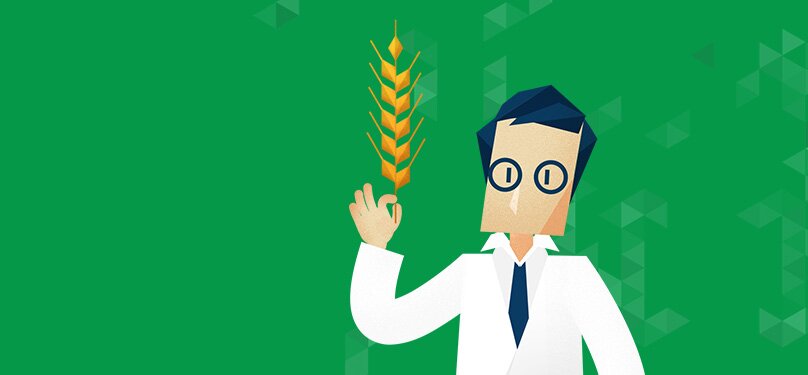A Tale of Two Bananas

19 July 2016
Luigi Guarino | Director of Science and Programs
My friend Ali Lawati is upset with me. He works on plant genetic resources conservation in Oman, and we’ve known each other for over twenty years, ever since we tried to collect seeds of the endemic wild relative of the carob in the Jebel Akhdar. (Well, we thought it was endemic at the time: a different subspecies has since been found in Somalia, but that’s a different story.) The reason Ali is upset with me is last week’s blog post on the use of a heirloom barley variety from a genebank to brew a specialty beer. Ali thought I should have found a weightier example of crop diversity making a difference, and told me so on Twitter. So I said I’d make it up to him, and asked him to name the crop to be featured in this week’s post. He chose bananas, so here goes.
Incidentally, I’m not sure why Ali picked that particular crop, but some areas in Oman are, perhaps surprisingly, rich in banana diversity. In fact, a variety new to science, no less, was discovered there only a few years ago. The reason for this unlikely hotspot is probably that Oman has been for centuries a crossroads for sailors and merchants. But here I want to talk about a biodiversity hotspot that is even hotter, because much closer to the ancestral home of the banana.
That’s the Pacific islands, and in particular Micronesia, and especially the small island of Pohnpei. For many years, that was home to another friend of mine, Lois Englberger, an American nutritionist. She tragically passed away five years ago this October, but for fifteen years, right up until the very end, she was indefatigable in her efforts to promote the use of local foods and crops as part of a healthy, sustainable diet in a region of the world that is being ravaged by non-communicable lifestyle diseases such as diabetes. The NGO she helped found, the Island Food Community of Pohnpei, is still going strong.
One of the local foods Lois and her co-workers promoted was karat bananas, some of the over fifty different banana varieties grown in Pohnpei. Traditionally used as an infant food, these tasty, orange-fleshed bananas are an excellent source of the chemical (beta-carotene) the body needs to make Vitamin A. Not enough Vitamin A can lead to blindness, especially in kids. The World Food Prize has just been won by a group of researchers who have been trying to increase through breeding the levels of beta-karotene in a different crop, the sweet potato. The National Association of Chronic Disease Directors (NACDD) and Center of Disease Control and Prevention (CDC) have listed the Island Food Community of Pohnpei’s Go Local campaign as one of their success stories in reducing the burden of chronic disease across the U.S.
So, another case of crop diversity making a difference, and for something a little more important than brewing an unusual beer. I hope that satisfies you, Ali. Alas, there’s a postscript to this story, which may spoil it for you, but let me tell it anyway, for the sake of completeness, and because it does illustrate some of the complexities we have to work with.
There’s been an effort to bring the benefits of orange-fleshed bananas to the rest of the world beyond Micronesia, starting with Uganda, where people also eat a lot of bananas, though totally different ones. The idea was to bring genes from karat bananas into local Ugandan types, so that local acceptability would go hand in hand with better nutrition. But, unlike this year’s World Food Prize winners, Australian researchers transferred those karat genes by genetic engineering. Bananas are not as easy to breed in the conventional manner as sweet potatoes: they hardly produce seeds, so genetic engineering is a massive time-saver. Nonetheless, the whole thing has, perhaps predictably, caused plenty of debate, sometimes acrimonious.
Sure, there are many different ways that people have tried to use crop genetic diversity to improve livelihoods, and plenty of disagreement about which way is best. Some of the disagreement has to do with science, some with economics, some with politics. Some is well-informed, some not so much. But as I’ve said elsewhere before, if we didn’t have the crop diversity in the first place, we couldn’t even have the debate, and we wouldn’t have the choice.
Categories: Banana, Nutritional Security
